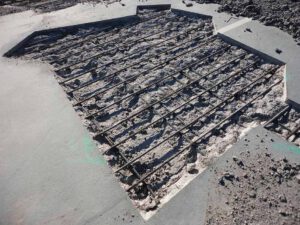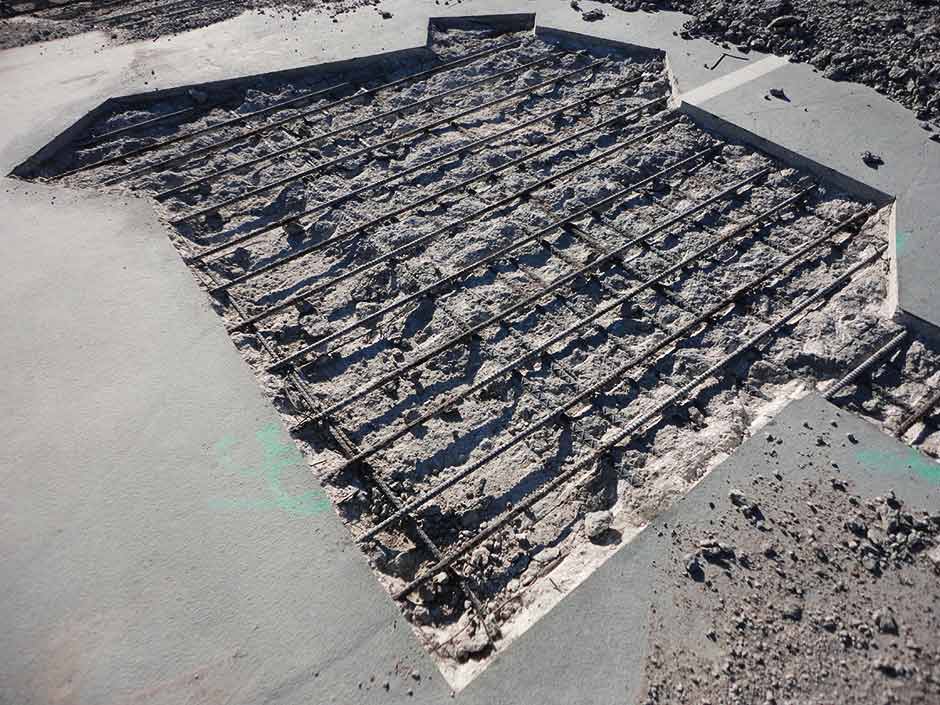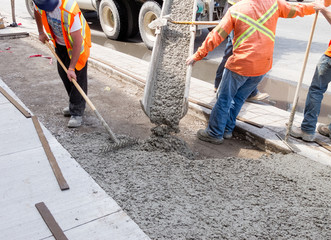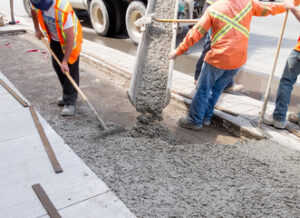Experts agree that no matter if you’re repairing residential concrete steps, reforming a sidewalk flag, or injecting a crack, the first thing to do is understand what caused it. This is important because, according to Fuller, “most repairs are symptoms, not solutions.” If you don’t address the underlying cause, it will likely happen again.
Concrete Repair Colorado Springs are complex, time-consuming tasks. They usually involve a thorough evaluation of the condition of the structure, a determination of the causes of the deterioration or distress, and the selection of repair methods and materials. In most cases, major structural repairs should be done by qualified professional engineers with extensive experience in concrete construction.
The preparation process involves cleaning the damaged area and preparing surfaces to receive the repair material. The surface must be free of dust, dirt, oil, and other substances that can interfere with the bond between the repair material and the existing concrete. The surface must also be moist enough to allow proper placement of the repair.
Surface preparation can include chemical cleaning, acid etching, or mechanical preparation. Different repair materials require different surface preparation techniques to achieve the best results. The preparation must also include the removal of the damaged section of the concrete.
When a concrete repair requires new concrete, the concrete replacement technique must be followed to ensure that the new concrete is properly tied into the existing reinforcing steel (rebar). This will reduce the potential for future cracking and flexural damage. The replacement technique also allows the use of normal concrete placement methods and helps avoid the need for special forms.
A good repair material must have a low shrinkage factor to minimize debonding from the old concrete. It should also have high flexural strength to handle shear and bending forces in concrete structures. Some repair materials have fibers or polymers, which improve the bond and increase the flexural strength of the repaired area.
Contractors should have a few tools on hand when they are working on concrete repair jobs. A good set of hand trowels is a must-have for most projects. These should include a finishing trowel, a margin trowel, and a pointed trowel. In addition, a caulk gun should be used for filling in small cracks or holes.
A concrete repair material should be easy to work with. It should have a low silica content and be easily mixed to the right consistency. It should also be able to adhere to vertical or overhead surfaces. It should also be freeze-thaw resistant and have good compressive, flexural, and abrasion strength. In addition, the material should be able to withstand exposure to water vapor and sunlight.
Mixing
Concrete repair contractors should use an advanced, high-performance concrete mix design that provides the optimum blend of workability, strength, and durability. A mix design should also be designed to meet safety regulations that include removing silica from the materials and making them easier to mix. A good mix is one that shows a uniform appearance and color and is consistent throughout its volume. Concrete mix manufacturers have made improvements to their products that make it easier for contractors to mix them. For example, Quikrete now offers pre-bagged concrete mix designs that have the additives mixed in. Some manufacturers have also incorporated polymers into their concrete repair materials that lead to greater bond strength and durability.
A contractor should carefully inspect the damaged concrete surface before starting repairs. Having a good understanding of what caused the damage is essential to repairing it properly. This can be done by a variety of non-destructive and destructive evaluation techniques, including inspection, radar, infrared thermography, impact echo, and core drilling. This will help determine the extent of the damage and what repairs are necessary.
The next step is to prepare the area for the repair. Depending on the damage, this may involve cutting the old concrete away and then cleaning the damaged surface to remove all dirt, debris, and other contaminants. Concrete surfaces that are cracked or broken should be hand troweled to remove all air gaps and ensure that the repair concrete is firmly bonded to the existing concrete.
Having the correct equipment and tools on hand is also important for a successful repair job. In addition to a wheelbarrow and a concrete mixer, it is important that a contractor bring a float, a finishing trowel, a margin trowel, and a pointed trowel for texturing. It is also helpful to have a caulk gun for the application of an adhesive or sealant, especially for overhead or vertical repairs.
If a new concrete section is to be placed in the same location as the old one, it is a good idea to form the front panels of a form while placing the concrete, which can be constructed as the placing progresses. This can greatly reduce the likelihood that the new and old concrete will crack and separate. In most cases, a form is not required for repairs to slabs that are less than 2 inches thick.
Applying
A concrete repair requires a thorough evaluation of the existing structure to determine the cause of the damage. This includes a structural analysis, destructive and non-destructive testing, a review of maintenance records, and a visual inspection. The results of this assessment will help in the selection of methods and materials for repairing the damaged surface. Major repairs to structural concrete should always be done by a professional engineer experienced in concrete construction.
There are many different types of concrete repair products on the market, and selecting one can be a daunting task. Consideration should be given to the type of material used, its color and texture, its ability to adhere to vertical or overhead surfaces, and whether it will stand up to chemicals or high service temperatures. The cost of the repair and how long it will last are also important factors.
For smaller repairs, polymer concrete is an excellent choice. Polymer concrete is a combination of Portland cement and aggregate with the addition of a polymer that leads to higher bond strength. It is available in a wide variety of strengths, and it can be colored to match the existing concrete. Polymer concrete is resistant to chlorides and other corrosives, but it is not recommended for use in areas where the concrete will be exposed to abrasion or impact loads.
Another popular concrete repair product is cement mortar or concrete, which can be matched with the existing concrete. It is similar to cement concrete, but it has a lower water content and may contain a latex modifier that reduces chloride ion ingress. This type of repair mortar is useful in preventing corrosion under concrete slabs, and it can be placed in both shallow and deep joints.
Conventional placement of concrete is a common method for large-scale repair projects, and it can be used to replace entire sections of a concrete floor or wall. It is necessary to ensure that the new concrete is bonded to the existing concrete, and this can be achieved by using a bond coat of equal parts sand and cement or by using epoxy resins. The new concrete should have a low w/c and a high percentage of coarse aggregate to minimize shrinkage and cracking.
Finishing
As with any concrete project, it’s important to figure out what caused the damage before you start. Then, make sure to prepare the site and install a repair designed to solve the problem. A bad repair can be costly for both contractors and owners. and it can also lead to a lot of frustration and rework.
One of the most common reasons repairs fail is because the wrong materials are used. The right material, on the other hand, will provide the best chance of a long-lasting solution. Bagged concrete mix manufacturers design their products to meet safety regulations, such as keeping silica to a minimum, according to Fuller and ICRI. In addition, some manufacturers offer additives to enhance the performance of their repair materials. These may include fibers, polymers, and admixtures that improve abrasion resistance, prevent cracking, and help with concrete consolidation.
Contractors should consider the dimensional characteristics of their concrete repair product and the freeze-thaw and thermal properties of the original concrete structure. In addition, they should test the concrete for its strength by gluing a metal dolly to the surface and pulling it to determine the failure psi of the concrete. A higher psi indicates a stronger repair.
When applying the concrete repair, the contractor should take care to attain proper concrete consolidation around dowel bars and along the patch perimeter to prevent honeycombing. Honeycombing reduces concrete’s strength and durability.
Once the concrete is placed, a technique called “feathering” can be used to blend the wet concrete with the surrounding dry concrete. This is especially useful on sidewalks and driveways.
A good finish can add to a concrete repair’s life and aesthetics. A concrete repair contractor can use a power broom, trowel, or float to smooth the repaired concrete surface to a sheen that’s similar to the original concrete.
It’s also a good idea to water cure the concrete for at least an hour after finishing it. This will ensure that the concrete is properly cured and able to resist environmental exposure. It will also reduce the likelihood of premature cracking. If the concrete is exposed to harsh environments, it’s a good idea to cover it with a weatherproof covering.


 Formwork is a framework that holds wet concrete until it sets, creating the shape of a structure. It can be permanent or temporary, and concrete contractors need to design a formwork system that balances quality, cost and safety. Formwork can be a major source of stress on construction sites and may need to be reinforced and braced to prevent collapse or damage to the concrete.
Formwork is a framework that holds wet concrete until it sets, creating the shape of a structure. It can be permanent or temporary, and concrete contractors need to design a formwork system that balances quality, cost and safety. Formwork can be a major source of stress on construction sites and may need to be reinforced and braced to prevent collapse or damage to the concrete.